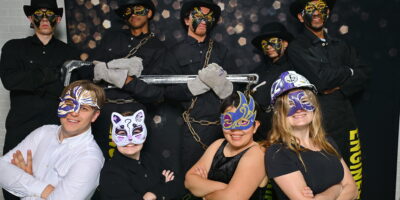At the end of the Winter 2012 term, the CIS (Council Internal Structure) committee was put together by the Engineering Society Council who were tasked with assessing the current way EngSoc council represents students and provide recommended changes to policies and structure if deficiencies were identified.
The committee has been meeting this term and began their mandate by analysing the current structure of EngSoc Council. Currently, each cohort (class) has two class reps who have a vote on council, as well as a vote per executive and a vote for the off-stream society. The council currently acts as the final body for all decision making; however, EngSoc does not have a Board of Directors that goes on to approve any motions passed by CIS. The committee discussed the positive and negative repercussions of including a Board of Directors. Pros to creating a BoD included a final sounding board for all decision making, more focused discussions because of the small group size, and having the benefit of a secondary body to approve all decisions. On the other hand, having this secondary body would mean that all changes would go through a more involved process which essentially means an added level of bureaucracy. The committee ultimately decided that, given the type of decisions that EngSoc makes and the fact that all joint decisions need to be passed by two councils already (A-Soc and B-Soc), the benefits of implementing a Board of Directors did not outweigh the negatives and so the committee left this topic to proceed on to analyzing the structure of EngSoc Council.
Council currently consists of 30-40 votes depending on the term and the number of classes on stream. The structure has existed in this way (with one vote per class and multiple reps responsible for each vote) for many years and, most notably, before there were 13 disciplines of Engineering at the University of Waterloo. Though this system ensures each cohort is represented, it also removed some sense of responsibility for those in multiple-streamed programs (why would I vote when the other class will?). The other point that the committee brought up with that is that the current arrangement of council is not likely scalable given the anticipated growth of Waterloo Engineering and the potential addition of new programs as mentioned in Vision 2015. However, the committee also recognized that certain groups should and must be represented on the EngSoc council; these groups included: each department, each graduating class, executives, and off stream classes. Given these identified groups, a proposal was put forward to have a council consisting of one vote per department and year (eg/ MME 2016, ECE 2013, Civ/Enviro/Geo 2014 would each be a vote) and the executives would share a vote between themselves.
This is where we need your help. The committee is looking for interested students to provide their insight and perspective on this proposed structure, and their opinions on how the EngSoc council could be bettered. The next meeting of the committee will be an open one in order to solicit student feedback, and will take place on June 5, 2012. To get the details of the meeting and add yourself to the attendance, please email president.b@engsoc.uwaterloo.ca .




Leave a Reply